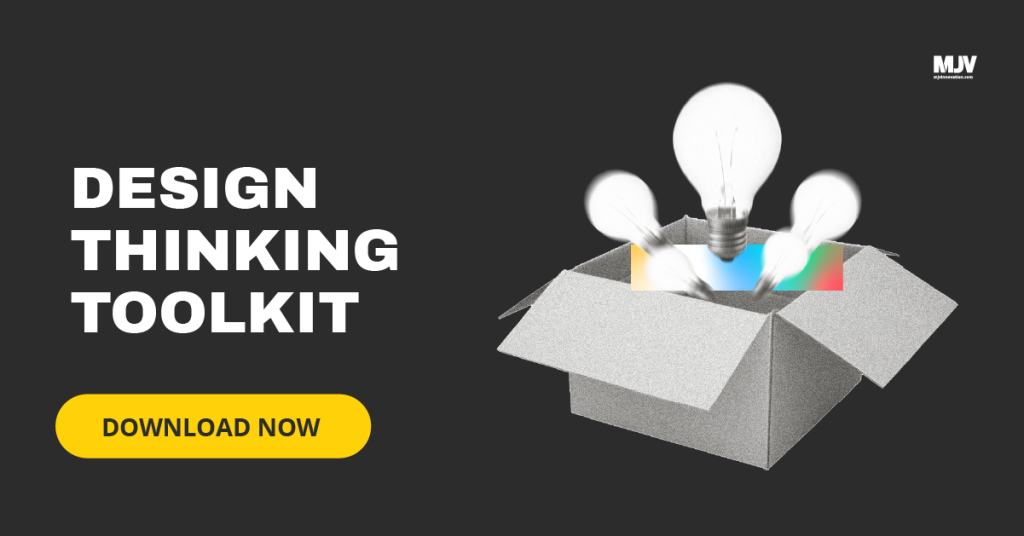The Three Phases of Design Thinking: Immersion, Ideation and Prototyping
The Design Thinking approach have changed the way thousands of companies think (and do) innovation. Start your transformation from 3 basic standards: Immersion, Ideation and Prototyping.
Before here on this blog we published a series of posts talking about Design Thinking, mostly Immersion, Ideation and Prototyping. Some readers, through social networks, asked us to provide a summary of all the phases in a single post. And we did it. But first, we have two messages for you.
The first is that this article is a champion of views. And since it’s so attractive (at least in our dashboards), we want to keep the essence of it. The second is that we’ve updated this content a little bit to converge with the most current view we have on Design Thinking.
That said, without further chit chat, let’s get down to business.
What is Design Thinking?
Design Thinking is a set of methods and processes used to identify and tackle problems, through which we generate creative thinking – in other words, a way of thinking creatively about business using unconventional means. Employed at modern companies, this methodology is basically related to the collection of information, analysis of knowledge and proposal of solutions.
Design Thinking refers to the way designers (in this case, professionals looking for solutions of any kind) in the corporate world think using abductive reasoning – thinking “outside the box.” In this way, they seek to formulate questions by understanding phenomena, observing the problem’s entire context.
In our book Design Thinking: Innovation in Business, one of the most respected works in the field, this explanation is given in much greater depth. A quick explanation of each of these phases is given below.
Update: What are the three (or four) main Design Thinking steps?
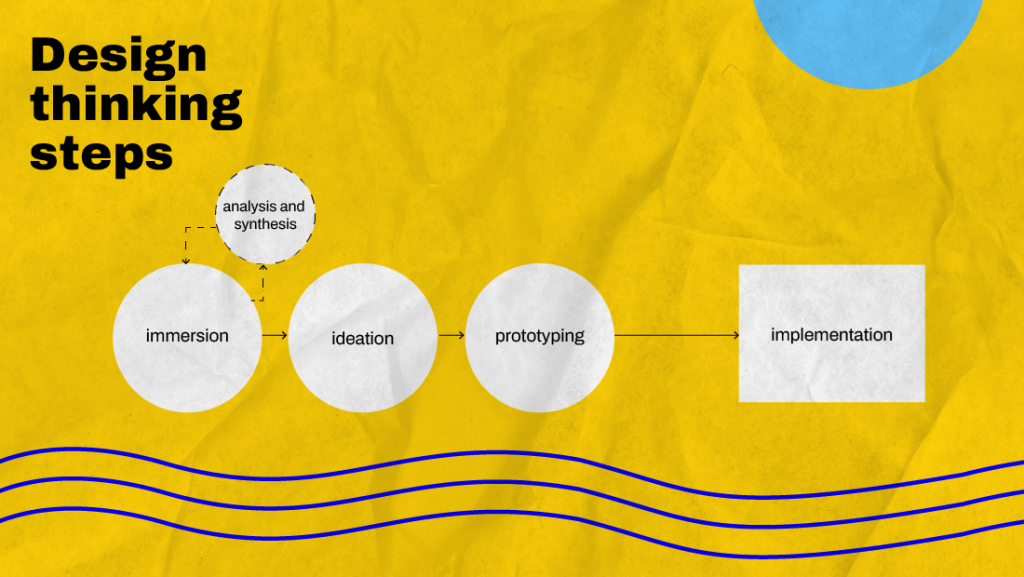
of the Immersion findings is included.
The different views on the Design Thinking process vary over time – and from company to company (or player to player).
For example, in some literature on the web you may find someone talking about an “Immersion & Analysis” phase. Or even “Prototyping & Testing” – as well as older versions of our own content as well. And this is perfectly natural.
Implementing a Design Thinking framework is not set in stone – and it evolves over time. Therefore, it is our duty to update the real status of DT.
Quick message: If you’re looking for the most up-to-date look at not just Design Thinking, but all the innovation approaches that are consuming the market, we’ve done that in our report. Take a closer look here.
For better visualization, an image of a linear process is usually used, but it is natural that conclusions from later phases modify the meaning of previous findings and generate new interpretations. This is how design methodologies work.
Our most current take on the method summarizes in: Immersion, Analysis and Synthesis, Ideation, and Prototyping
→ See also: 30 Design Thinking Tools for insight generation
Now that you’ve covered the variations in perspective on the phases of Design Thinking, let’s quickly delve into which processes take place in each of them.
Immersion: finding the origin of the problem
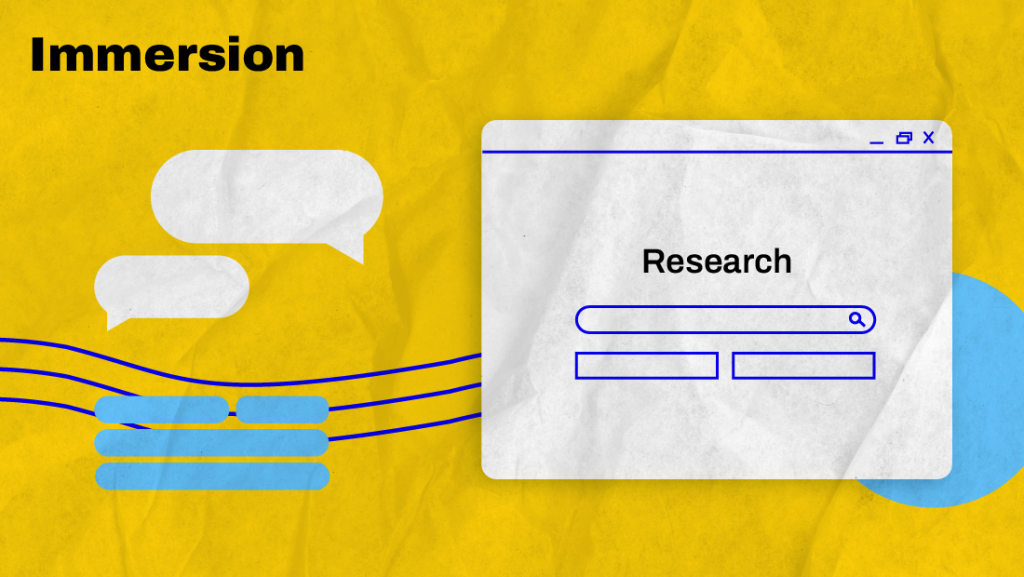
This is the phase of getting close to the problem, researching it and contextualizing it. The team seeks to dive into the implications of the challenge, studying it from both the company’s and client’s perspective.
Immersion may be divided into two parts: Preliminary, when there is first contact with the problem; and In-Depth, when we start to identify the needs and opportunities that will guide the generation of solutions in the following phase of the project, Ideation.
Analysis & Synthesis: turning data into strategy
In the data age, even qualitative research processes have become more nuanced to be analyzed. Therefore, the stage of Analysis and Synthesis of the Immersion findings gained a specific space in this framework.
It’s time for the team to group collected data and reframing the initial situation (or hypothesis) based on transforming data into insights and information into strategic direction.
Ideation: brainstorming
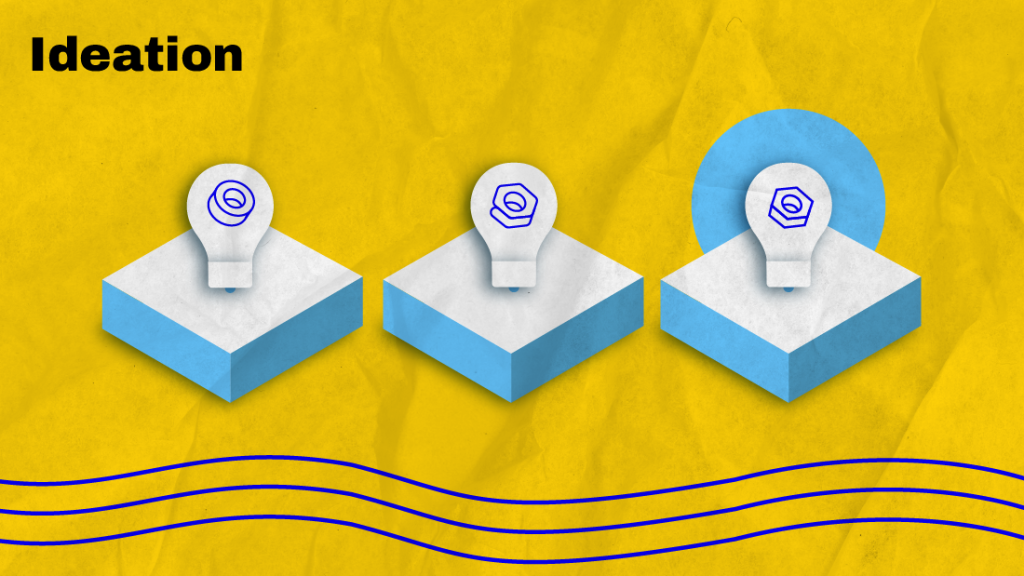
In this brainstorming phase, ideas are presented without being judged at all. It’s the moment for really thinking “outside the box,” proposing solutions to the problem. To this end, we use synthesis tools to stimulate creativity and generate solutions in line with the context of the subject in question.
There are no limits to ideas in this phase. It is also advisable to have a variety of profiles of people involved in ideation, including the people who will benefit from the proposed solutions.
Prototyping: time to make decisions
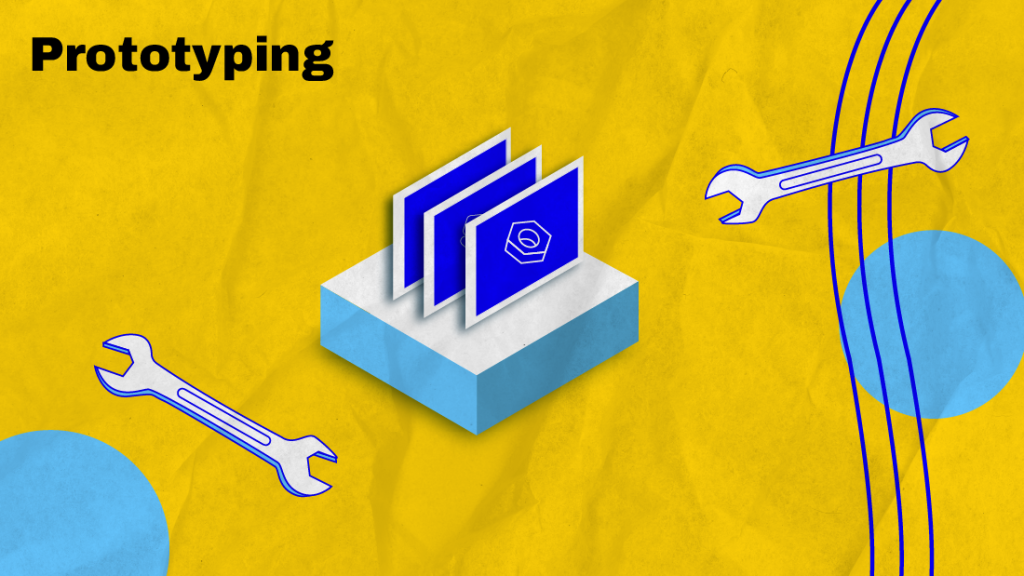
“Prototyping means making an idea tangible; it is the passage from the abstract to the physical in order to represent reality – even if simplified – and promote validations,” explain the authors of Design Thinking – Innovation in Business.
In short, Prototyping is the phase of validating the ideas generated. It is the time to trim things down, see what fits in the project, bring proposals together and get down to work.
Despite being presented as the final phase, prototyping can happen at the same time as the other phases. As ideas arise, they can be prototyped, tested and, in some cases, even implemented.
Interested? See how the MJV team can contribute, through Design Thinking, to transforming your business challenges into innovative solutions!
Back
